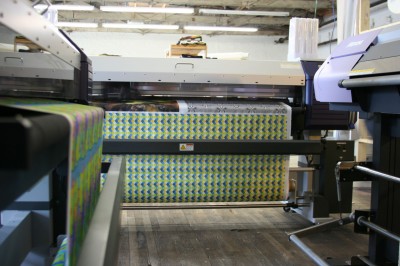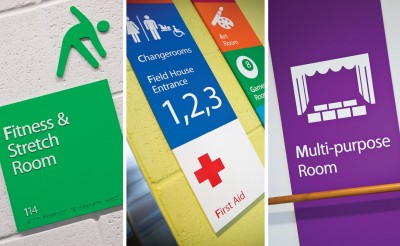Currently celebrating its 10th anniversary, Imagerie DB in Boisbriand, Que., is an illustrative example of how wide-format printing has evolved. When it was originally founded by brothers Denis and Benoit Paquette and their business partners, it marked a major transition from their earlier pre-press experience working with colour separation, films, plates and offset printers.
|
Digital signage is particularly well-suited for hospitals, clinics and other health-service environments. Information can be provided on an as-needed and as-available basis, with messages that are interpreted easily by passersby. Waiting times can become useful for the delivery of health advice.
|
When planning to purchase a wide-format dye sublimation system, it is important to ‘begin at the end’ by first considering what the final product will be. A sign shop’s planned output will dictate its choices between various printers, bulk ink systems, heat presses, raster image processors (RIPs) and colour matching tools.
|
When Dave Cunningham founded Landmark Sign in Victoria in 1997, it was a one-man operation based in an 83.6-m2 (900-sf) two-storey garage. Today, Landmark has become the largest illuminated sign manufacturer on Vancouver Island and a major contender in the Canadian sign industry.
|
On June 23, 2012, Ultimate Dinosaurs: Giants from Gondwana made its world premiere at the Royal Ontario Museum (ROM) in Toronto. Running for a limited time before touring internationally, the new exhibition is designed to take visitors into the world of dinosaurs during the Triassic, Jurassic and Cretaceous periods.
|
People outside the printed image business do not always appreciate why colour management is so important. To them, red is red and blue is blue. Getting colour right, however, can still be a major challenge in today’s industry, whether using offset lithographic, inkjet proofing or wide-format production printers.
|
The Abilities Centre, a new multi-purpose facility in Whitby, Ont., has been designed to provide full accessibility for people of all ages and abilities. In the works for approximately a decade before opening in June 2012, it represents an ambitious hope to change Canada’s social fabric through inclusiveness.
|
Unlike the U.S. and its well-established Americans with Disabilities Act (ADA), Canada does not have a single, consistent, national standard for accessibility signage. There is federal legislation that requires public spaces to be made accessible to people with disabilities, but provinces, localities and agencies are also allowed to design their own codes and guidelines, some of which relate to sign designs, materials and installation procedures.
|
For more than 20 years, Heritage Sign Builders in Welland, Ont., has specialized in wooden and high-density urethane (HDU) signs and point-of-purchase (POP) displays. President Robert Bogdan describes himself as mostly self-taught in this discipline, though he got his start with his father, painting election signs in his youth.
|
One of the advantages of finishing machines is they can be quite versatile, cutting, creasing, milling (routing) and cutting v-notches into a wide variety of materials, such as corrugated boards, folding cartons, solid boards, wood, foamboards and a long list of plastics.
|
|
|















